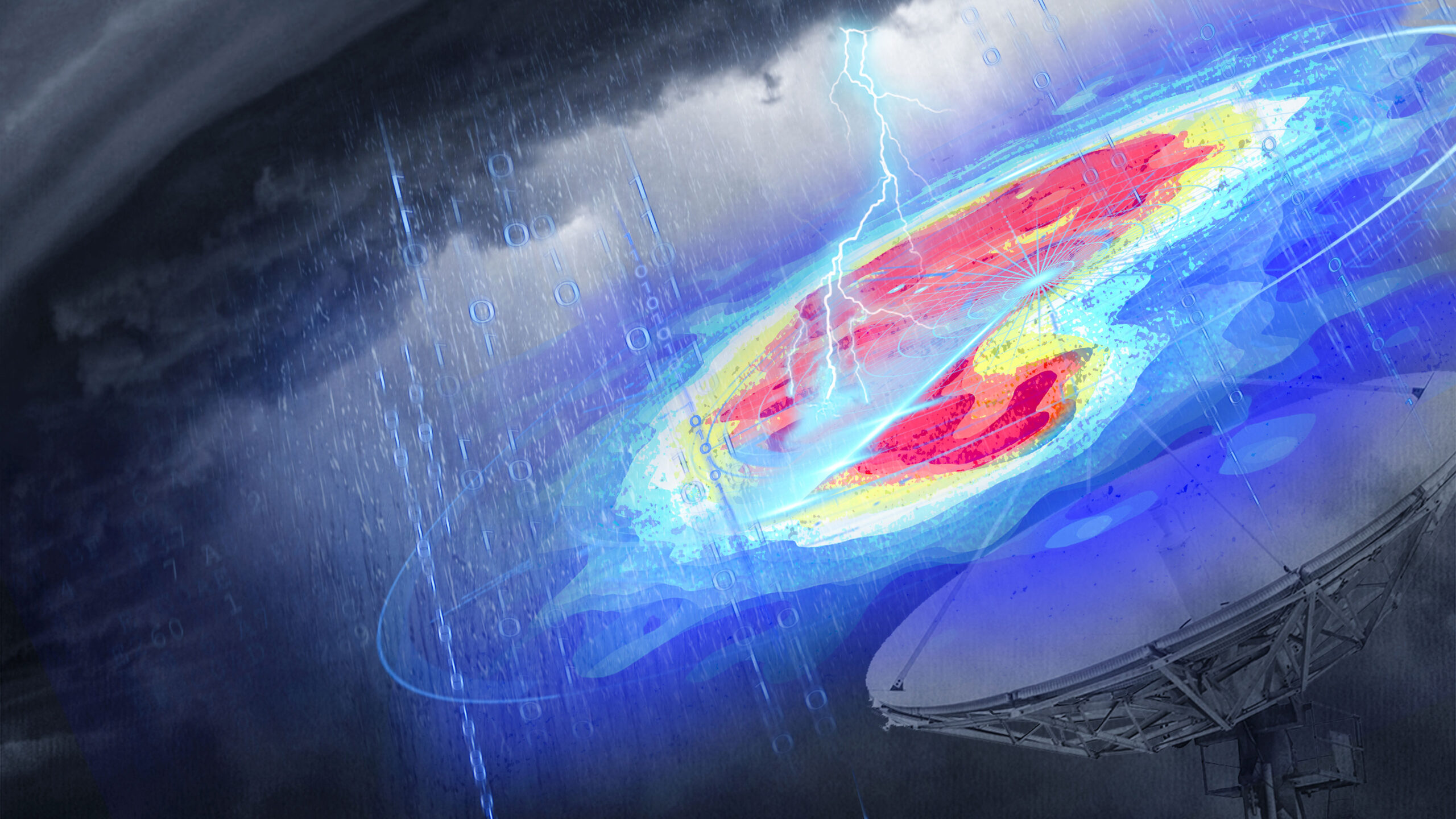 NowcastNet uses a novel deep learning architecture to perform short-term weather forecasting of extreme precipitation events. (Image courtesy of Michael I. Jordan)
NowcastNet uses a novel deep learning architecture to perform short-term weather forecasting of extreme precipitation events. (Image courtesy of Michael I. Jordan)‘Nowcasting’ model enables forecasting of extreme precipitation
Researchers from UC Berkeley, Tsinghua University and the Chinese Meteorological Administration have developed a short-term weather prediction model that uses artificial intelligence to help forecast dangerous precipitation events mere hours before they strike.
Dubbed NowcastNet, the model combines physical rules and deep learning for the “nowcasting” of precipitation. In a study published July 5 in Nature, NowcastNet used radar observations to accurately predict precipitation over regions of 2,048 km × 2,048 km up to three hours in advance.
Nowcasting is weather forecasting on a very short term, which can provide detailed information on the present weather. With climate change driving more frequent and intense extreme weather events, effective nowcasting could prove pivotal in saving lives and minimizing property damage from extreme precipitation, such as unusually heavy rain that can increase the risk of flash floods and landslides.
In the study, 62 meteorologists evaluated the forecast skill of NowcastNet against several leading nowcasting models for extreme precipitation. NowcastNet ranked first in about 70% of the cases.
“The findings demonstrated NowcastNet’s strength in forecasting of rain rates, particularly extreme precipitation events that were previously considered challenging,” said co-author Michael Jordan, Pehong Chen Distinguished Professor in the Department of Electrical Engineering and Computer Sciences and the Department of Statistics at UC Berkeley.
In creating NowcastNet, the researchers developed a novel deep learning architecture and applied it to the nowcasting of extreme precipitation. The neural network framework allows researchers to more accurately predict the location of a storm as well as key characteristics such as heat and moisture, while the overall algorithm combines radar-based estimates of surface precipitation with fluid dynamical laws to predict future radar fields.
NowcastNet is available as open-source software, so it can be easily accessed and used by meteorologists worldwide. “So far, the reaction from meteorologists appears to be quite positive,” said Jordan.